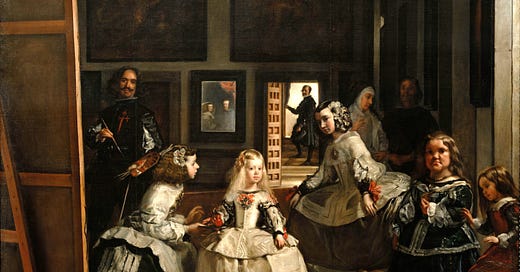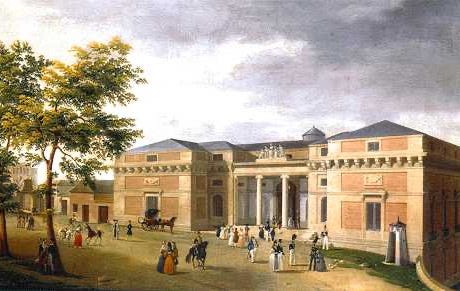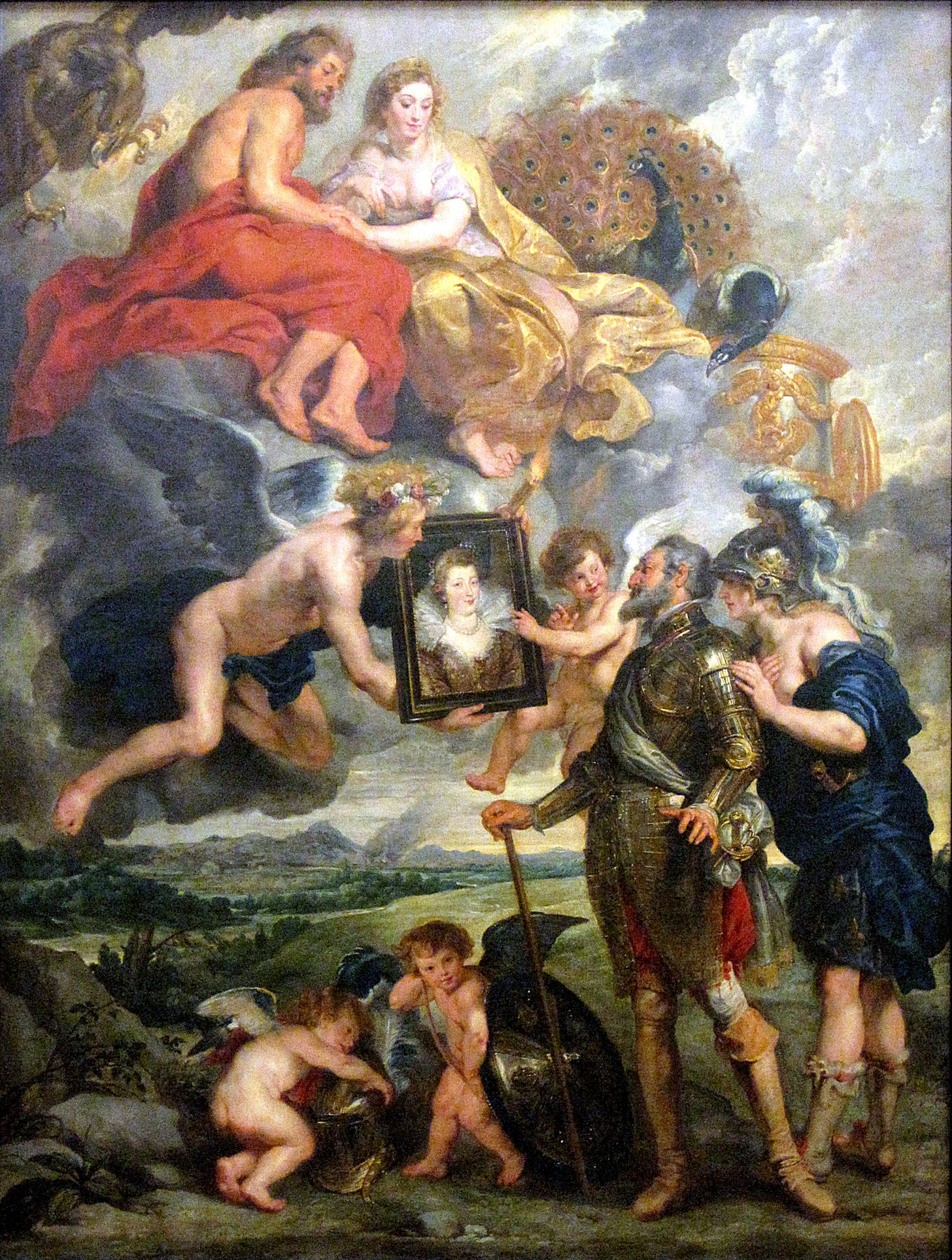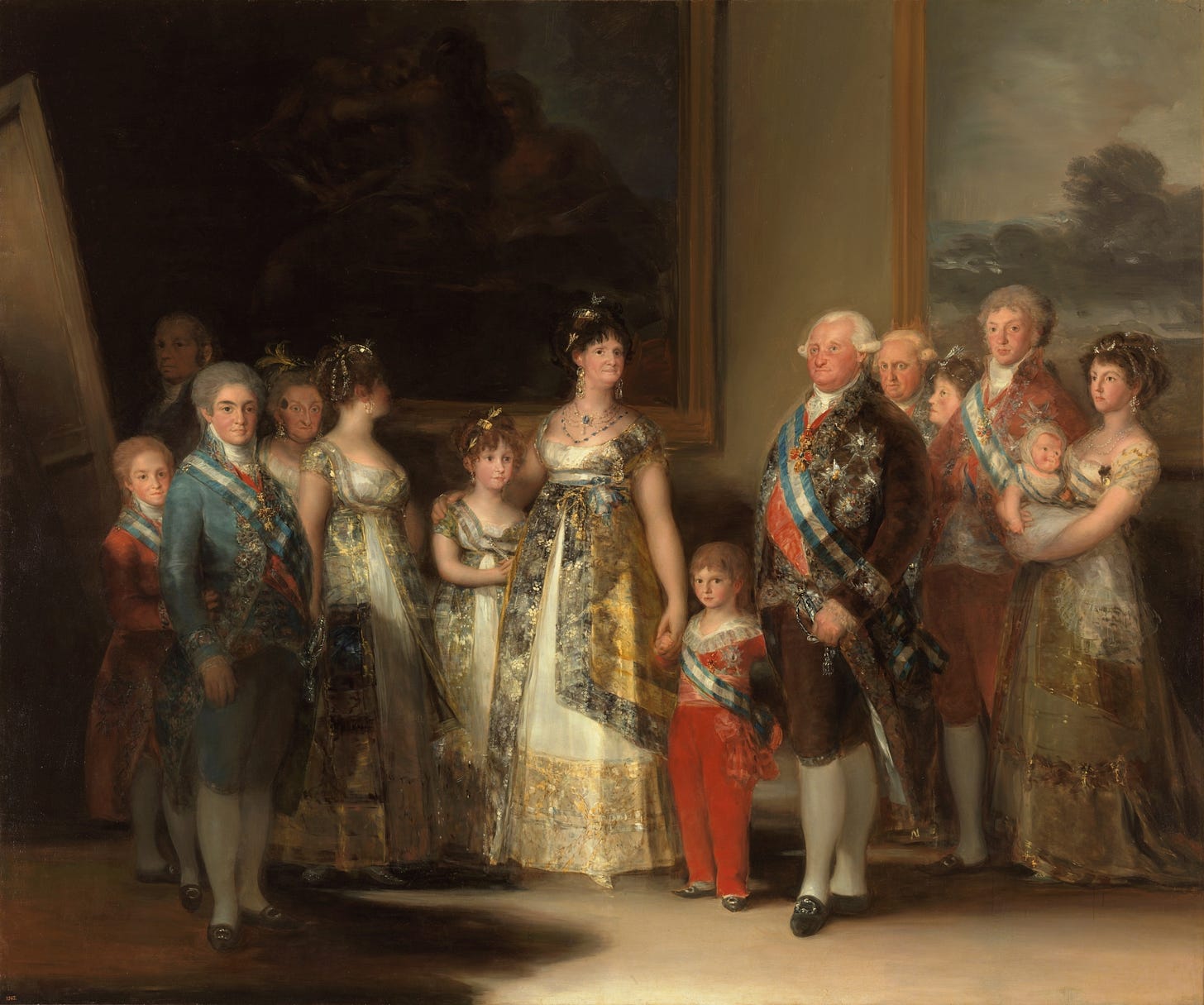The Prado Museum in Madrid is a treasure trove of art, originally designed in 1785 to house a natural history museum, not an art gallery. Imagine the Prado filled with stuffed animals instead of Velázquez's portraits of the Spanish royal family! Fortunately, two generations later, the wife of King Ferdinand VII had a more artistic vision and turned it into the art museum we know today.
Speaking of Velázquez, the Prado superstar was not just a master of painting but also a master of trolling. In his famous painting “Las Meninas,” he painted himself right into the scene with the royals, paintbrush in hand, as if to say, “Yes, I’m that good.” So good, in fact, that the silhouettes of the girls from his masterpiece have become the most popular souvenir you can buy in Madrid almost four centuries later.
Way before that, Velázquez had a bit of a personal beef with the Flemish court rockstar Rubens, whose works, like his own, now grace the walls of the Prado. By the time Velázquez was climbing the ranks, Rubens was already the darling of Europe—celebrated for his grand Baroque style, vibrant colors, and knack for schmoozing royalty. He was especially beloved in Spain, where his reputation sparkled brighter than freshly polished armor.
Their rivalry hit its peak in 1628, when Rubens rolled into Madrid for a nine-month stay. The Spanish court was electrified—Rubens impressed everyone with his lightning-fast brushwork and the kind of flattering details that could make even the grumpiest aristocrat smile. Velázquez met him, observed his techniques, and probably gritted his teeth a little.
In contrast, Velázquez favored a more restrained, naturalistic approach, emphasizing realism over dramatic flair—like the introverted genius at a party full of show-offs. Over time, he carved out his own niche, becoming Spain’s star and solidifying a style that stood in stark contrast to Rubens’s flamboyance. In the end, no judges were called, and no winner was crowned, but the Spanish court—and art history—clearly benefited from this artistic "duel."
Another gem is Goya, the successor to this duel, who puzzled art historians by depicting his royal patrons in awkward postures and placing the king away from the image's center. When commissioned to paint the ceilings of the Royal Palace, he reportedly took breaks to shoot birds in the courtyard below.
Talking about artistic procrastination. There’s Titian, who was so popular that even when he was nearly 90, he was still getting commissions from kings. Known for taking his time, one legend says that when a patron asked when his painting would be done, Titian replied, “It will be ready when I die.”
But hold on, why is El Prado even called like this? The museum was built on El Prado de los Jerónimos, or “The Meadow of the Jerónimos.” Yes, the world-famous museum is named after a literal meadow. Imagine if the Louvre had been named “The Yard” or “The Lawn”!
Speaking of meadows, Hieronymus Bosch’s painting "The Garden of Earthly Delights" is like a Where’s Waldo of the Middle Ages, filled with bizarre creatures and wild scenes that would make even Salvador Dalí goggle. Bosch was clearly the life of any medieval party—assuming the party involved discussing apocalyptic nightmares.
Cheers!
Art needs more eyes — and so does this blog.
It’s free to read, but only grows if it travels.
Liked it even a bit? Tap the heart.
A line stuck with you? Drop it in a comment.
Smiled once? Hit restack.
Want to keep this writing alive? Send it to a curious friend to subscribe.







